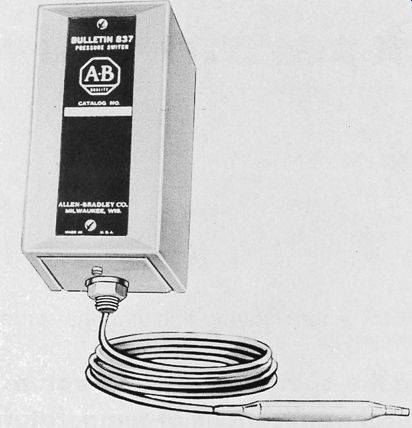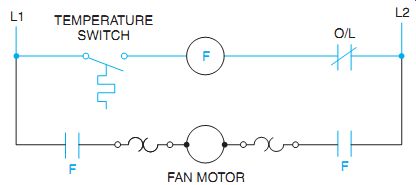AMAZON multi-meters discounts AMAZON oscilloscope discounts
GOALS:
- • Describe the operation of temperature switches.
- • List several applications of temperature switches.
- • Read and draw wiring symbols and circuits for temperature switches.
- • Describe a solid-state control system.
Temperature switches are designed to provide automatic control of temperature regulating equipment, ill. 1. Industrial temperature controllers are used for applications where the temperature to be controlled is higher than the normal or ambient temperature. In general, the applications of temperature control are more concerned with the temperature regulation of liquids than of gases. This is a result of the relatively greater conductivity between the bulb and a liquid, as compared with the conductivity between the bulb and a gas (such as air). Thus, if air or gas temperatures are to be controlled, the sensitivity of the sensor decreases and the difference between the on and off points widens.
To operate a temperature switch, the gas vapor or liquid pressure expands a metal bellows against the force of a spring. The expanding bellows moves an operating pin. The pin snaps a precision switch to its operating position when a preset point is reached. (This action is similar to the operation of industrial pres sure switches.) The pressure that operates the switch is proportional to the temperature of a liquid in a closed bulb. The precision switch snaps back to its normal position when the pressure in the bellows drops enough to allow the main spring to compress the bellows.
There are many types of thermostats that can be used to provide automatic control of space heating and cooling equipment. A typical thermostat is a temperature-actuated, two-wire (or more) control pilot device (switch). Temperature-actuated switches are used to control circuits in order to operate heaters, blowers, fans, solenoid valves, pumps, and other devices.
ill. 2 illustrates a two-wire temperature switch controlling a cooling fan motor. When a high temperature closes the temperature switch, it energizes coil F. Coil F closes F contacts, starting the motor.

ill. 1 Industrial temperature switch with extension bulb.

ill. 2 Temperature switch controlling a cooling fan

ill. 3 Solid-state temperature control system using thermistor-type temperature
sensors.
SOLID-STATE TEMPERATURE CONTROL SYSTEMS
There are many different types of temperature switches, both mechanical and electronic.
ill. 3 shows a panel mounting, solid-state temperature control system. This system is designed with three high-accuracy thermistor temperature sensors. These sensors can be used to protect three-phase transformer coils from overheating. The sensors transmit the internal coil temperatures to a microprocessor (minicomputer), which is programmed to pro vide a digital display in degrees on the front panel of the control module. Electrical hookup terminals are provided on the back for alarm and to energize fan motors.
QUIZ:
1. What are some applications of temperature-actuated switches?
2. How is the average electrician involved with electronic temperature controls?